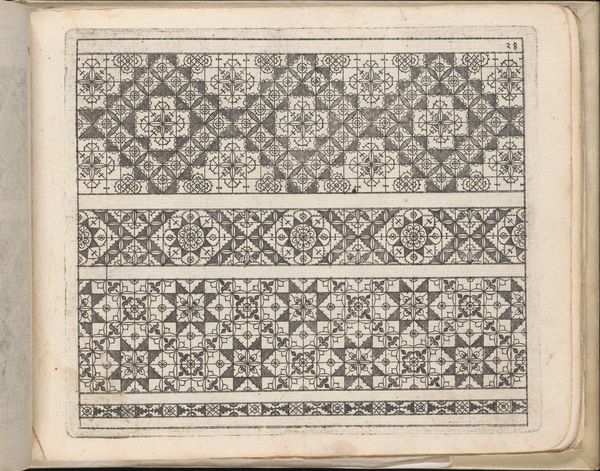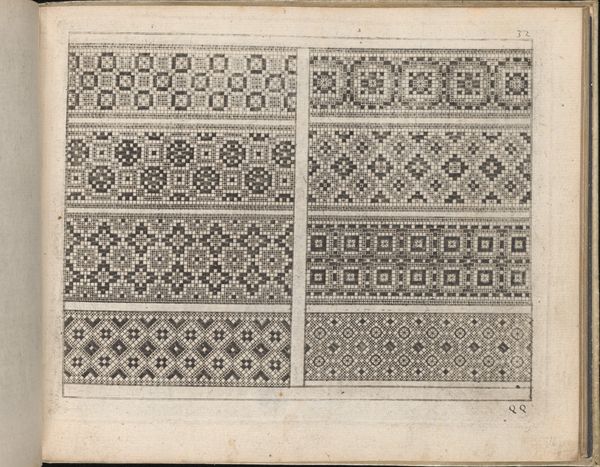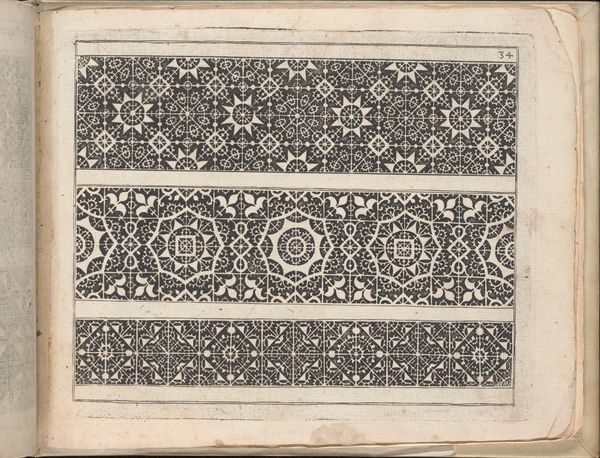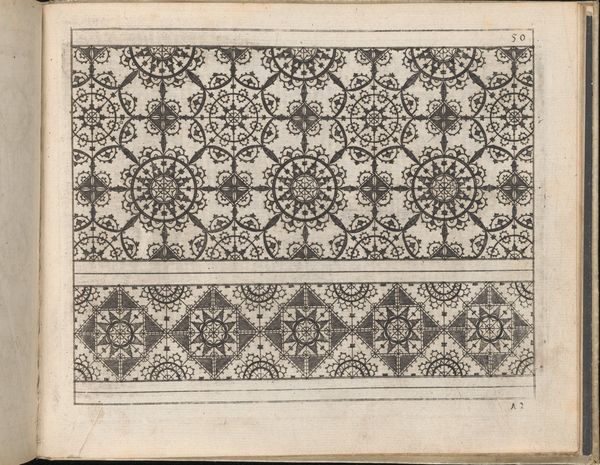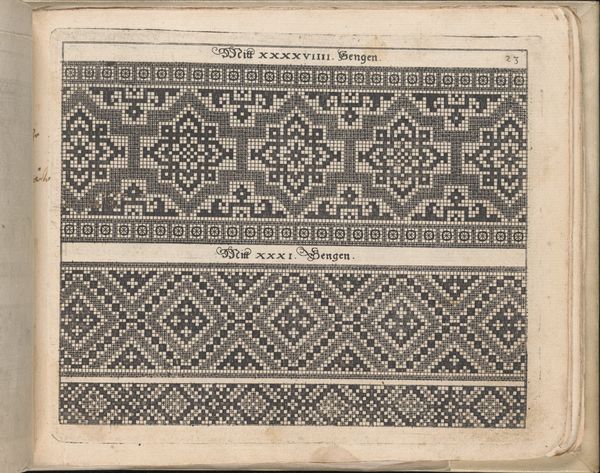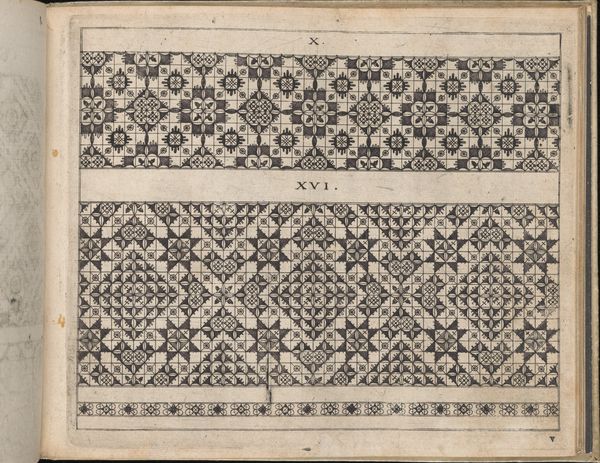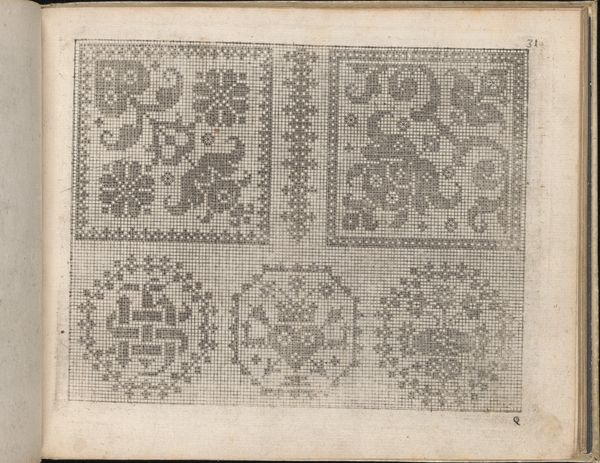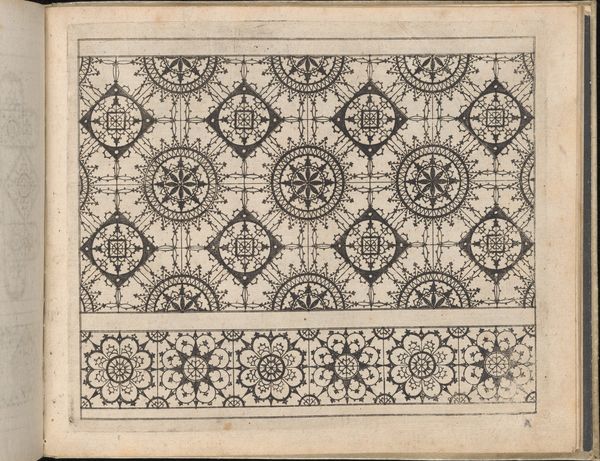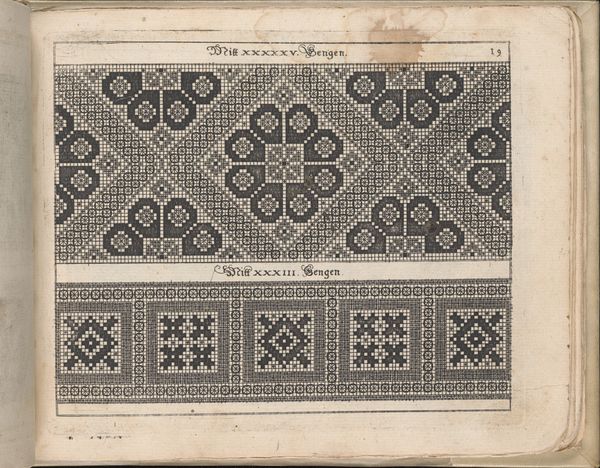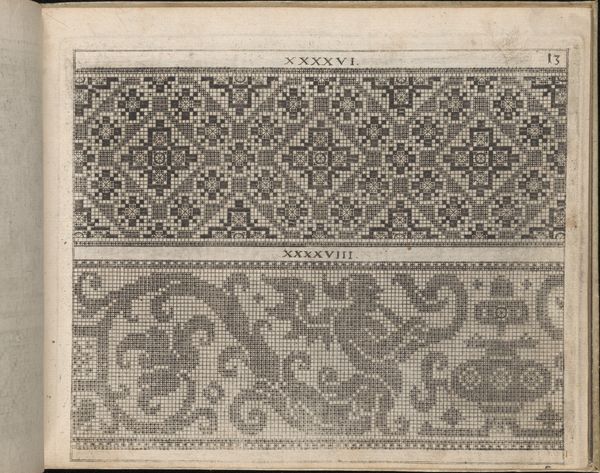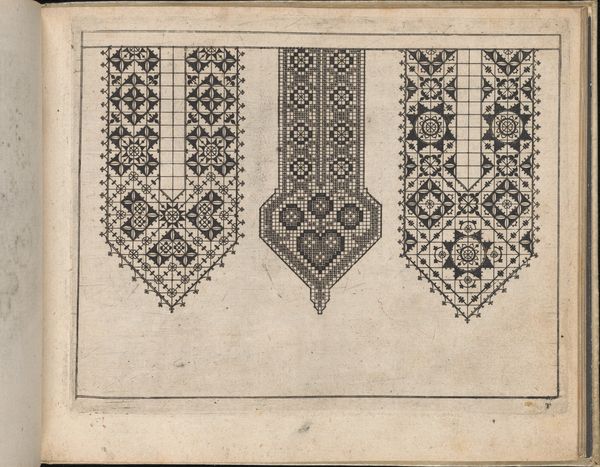
drawing, graphic-art, ornament, print, woodcut
#
drawing
#
graphic-art
#
ornament
#
toned paper
#
medieval
#
ink paper printed
# print
#
book
#
geometric
#
woodcut
Dimensions: Overall: 5 11/16 x 7 1/16 x 3/4 in. (14.5 x 18 x 1.9 cm)
Copyright: Public Domain
Curator: This is page 43r from Johann Sibmacher's "Newes Modelbuch in Kupffer," printed in 1604. It's a woodcut on toned paper, residing here at the Met. Editor: My initial reaction is—wow, it’s so precise. A sort of early pixel art. All these geometric forms meticulously rendered in black ink on what looks like a grid. What were these designs for? Curator: This book, like many of its kind, served as a pattern book for artisans. Needleworkers, lacemakers, embroiderers. These designs would have been copied and adapted for textiles, clothing, and household decorations. It demonstrates the flourishing printing industry catering to craft practices. Editor: It's amazing to think about these intricate patterns being translated into thread and fabric. Consider the labor involved – not just in producing the original woodcut, but in the countless hours spent recreating these designs by hand. The level of skill and dedication required to reproduce them perfectly speaks volumes about the value placed on handcrafts at the time. Curator: Precisely. These pattern books also reflect social hierarchies. Owning such a book signified access to knowledge and the resources for fine craftsmanship. Embellished clothing and textiles indicated social standing, and books like this helped disseminate those designs to a broader, though still relatively privileged, audience. It’s also about the politics of appearance and the cultural importance of textiles in that period. Editor: Looking at the patterns themselves, there's a distinct sense of both mathematical precision and playful invention. I’m wondering about the original makers; did the woodcutters have backgrounds in the textile trades? To imagine that transfer of technical knowledge, or maybe even an early form of design collaboration between printing and handicraft? Curator: It’s hard to say definitively. We can speculate about the collaborations of artists, printers, and artisans. But it really represents a crucial intersection in the history of craft, design and dissemination of style. It reveals how print culture began influencing and democratizing design to an extent. Editor: Absolutely. Studying such seemingly minor works grants real insight into not just aesthetic and historical value systems, but a tangible perspective on past forms of craftwork, and making. Curator: A visual and tactile inheritance from generations ago!
Comments
No comments
Be the first to comment and join the conversation on the ultimate creative platform.
